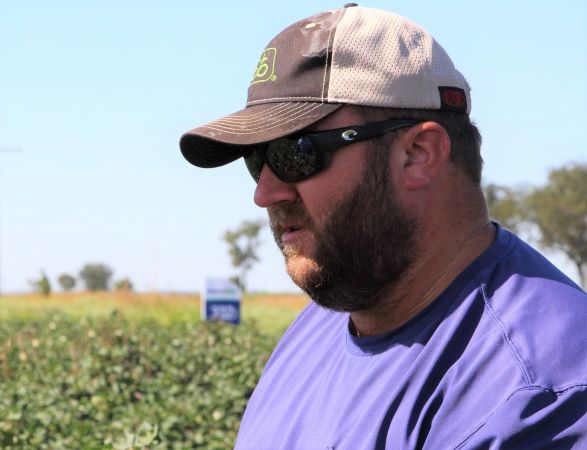Partnerships and Policies Open Doors for African Cotton, Textiles
The cotton, textile and apparel sector in Africa is a story of massive opportunities as a result of under-utilized potential in the production of cotton, and lack of a strong intermediary sector being spinning and textile mills leading to a short supply of fabrics in the face of a strong apparel industry.
Africa’s Position in Global Cotton
According to an International Cotton Advisory Committee report in 2012, the world’s cotton production in 2011/12 season was approximately 27 million tonnes. Out of this, Africa’s share is estimated to be 1.47 million tonnes, accounting for just about 5.4% of the global total.
According to the same report, the total amount of cotton consumed by Africa in 2012 amounted to 0.32 million tonnes – which means that close to 80% of African cotton is exported in raw form, a statistic that indicates limited value addition across the region.
A closer look at the details will show that the bulk of the cotton produced (45%) is from West African countries, mainly Burkina Faso, Mali, Cameroon, Benin and Ivory Coast.
On the other hand, the bulk of the consumption (55%) is happening in the northern African region, mainly in Egypt and Morocco.
The overall picture is that Africa accounts for just about 1% of the total global consumption of cotton.
Similarly, the status of the textile industry in Africa highlights massive opportunities. According to the International Manufacturers Federation, Africa accounts for just about 2% of the global short staple spindles and 1% of the shuttleless looms, according to its 2011 report.
Egypt accounts for the lion’s share of the investments and capacities in the spinning sector, along with some other North African Countries, South Africa and Mauritius. This is well supported by the fact that Egypt holds the lead in consumption of cotton in Africa.
In the apparel sector, total exports from Africa to the United States in 2012 (based on United Nations Comtrade statistics) totaled about $2 billion, with Sub-Saharan Africa benefiting greatly from duty-free access into the U.S. market under the African Growth and Opportunity Act (approximately $1 billion amounting to 50% of the total exports), led by Lesotho, Kenya and Mauritius.
Egypt alone accounts for almost 50% of the remaining share ($1.08 billion) which confirms their dominance across the value chain.
A Champion for Growth, Access
ACTIF is currently at the forefront of championing advocacy issues that result in increased market access in the international and regional markets.
This includes advocacy efforts under African Growth & Opportunity Act that provides duty-free access of apparel from Africa into the U.S. market, and under European Partnership Agreements that provides for market access into Europe.
The African Growth & Opportunity Act provision is currently expected to expire in 2015 and ACTIF, in collaboration with other key stakeholders, has been engaging the U.S. government for a seamless renewal of the Act, including third country fabric.
On the regional front, ACTIF has been pushing for favorable rules of origin for the cotton, textile and apparel sectors under the East African Community (EAC) market (currently under final stages of adoption), and the EAC-COMESA-Southern Africa Development Community tripartite that is currently under discussion.
These two free trade agreements are set to open up the regional market for cotton, textile and apparel trade, leading to stronger linkages between the cotton/textile/apparel players in Africa.
Major Impact Will Be Felt
Sustainable cotton production is set to have the greatest impact in Africa in the next few years. This includes development of cotton production under initiatives and brands such as the Better Cotton Initiative (BCI), Cotton Made in Africa (CMiA), and organic cotton.
ACTIF has witnessed growing interest in these products, which is currently being driven by growing demand – especially from European consumers.
ACTIF recently entered into a collaboration agreement with Competitive African Cotton Initiative (COMPACI) /Aid by Trade Foundation (AbTF) with the objective of harnessing their efforts and enable cotton-producing countries of the continent to increase productivity and competitiveness of cotton in Africa and to strengthen textile production in Africa in order to improve and increase the added-value in the cotton and textile value chain. This project is expected to leverage on the existing sustainable production under CMiA and explore linkages for value addition in Africa. The project is also expected to promote sustainable cotton production across the Eastern and Southern African region, where it is yet to be developed as compared to West African Countries.
ACTIF is also promoting the development of production under BCI, including value addition in the full value chain up to the retailer.
This project, currently in the concept stage, involves collaboration with Solidaridad, which has already committed to support a cotton project in Kenya under BCI.
ACTIF is exploring ways of linking the expected production to a complete value chain project to ensure that the project is sustainable. ACTIF is also in discussion with Value Added in Africa, an Irish-based organization to explore linkages to key brands and retailers in the European Union for the final products.
Innovative solutions such as good agricultural practices, price risk management training and crop insurance products are needed to protect the current and future production of Cotton in Africa.
The future of cotton production in Africa will be assured if more partners come on board to support sustainable production and innovative solutions to ensure that the farmers see real benefit of the cotton business and motivate them to continue production, even in the face of competing crops.









